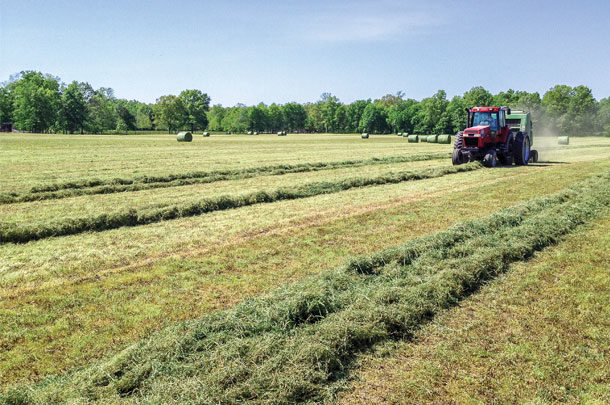With this change, private companies are doing their best to fill the gaps. Because cultivated pasture and hay land is the fourth- largest crop in the U.S., it demands the focus of private seed breeding, production and marketing companies.
Current advancements from private breeding activities are varied depending on the individual company’s market focus. Many advancements are available in the marketplace, and some are yet to reach their full commercial potential. Orchardgrass is a good example. By accessing worldwide germplasm, orchardgrass breeders have been able to increase the range in its maturity, developing varieties with both very early and very late maturity dates.
In addition, progress on lengthening the maturity range of other species, including perennial ryegrass, timothy and tall fescue is being accomplished. The industry, through the American Forage and Grasslands Council, is developing a protocol to standardize and categorize the maturity of many commercially available cultivars of forage grasses.
Hybridization is improving the species of forage grasses commonly known as festulolium (a hybrid of fescue and ryegrass). By crossing plants with the appropriate traits of both fescues and ryegrass, breeders are improving and specializing festuloliums by improving how, where and when it can be utilized. Advancements have been achieved in adding palatability and forage quality to the tall fescues.

Stand longevity and fiber digestibility are being enhanced in ryegrasses by crossbreeding with meadow fescue species. The result is the addition of new varieties with added value to forage production through higher yields and better forage quality.
Endophytes are being both isolated and incorporated into grass crops. “Novel” or “safe” endophytes are fungi that benefit plants without harming livestock by working in symbiosis with the host plant to improve pest resistance, disease resistance, nutrient and water uptake, and generally create a stronger, healthier plant with greater persistence.
In alfalfa, work is being done to change both the lignin content and its composition while maintaining the high-quality characteristics that matter most. Reducing the amount of lignin in the plant fundamentally changes the relationship between forage quality and the stage of maturity. These changes should allow growers to make better decisions related to forage quality and cutting schedules, without sacrificing forage yield.
Analyzing forage quality in the breeding process is also improving. Some companies now employ near-infrared spectrometer (NIR) forage analyzers onboard plot harvesters. These forage quality testing machines provide factual data on every plot and every cut of a forage trial, exponentially expanding the breeder’s data.
More data means better decisions. The best breeding lines can either be moved to commercial marketing or be continued in the breeding selection process. This greatly improves the quality of the variety and decreases the time needed to make decisions around selection, which shortens the cycle of variety development. This is a great advancement over more traditional observational selection processes.
Following the lead of breeding methods under development and utilized in other crops, breeders will increasingly employ newer and more advanced techniques to achieve measurable gains in grass and legume forage quantity and quality. Breeding goals once thought unrealizable are now on the horizon for this important on-farm crop with the advancement of predictive breeding, which uses gene mapping to provide insight as to potential outcomes.
For example, the entire genome of the ryegrass plant has been successfully mapped. Borrowing from other advanced breeding techniques, plant breeders are now beginning to use this data along with genetic markers in forage breeding. Knowing the genetics of plants and their phenotypical expression will lead to better cultivars and quicker breeding cycles.
The seed industry is investing in the research and development of grasses and legumes, which is truly important to on-farm crops. The advancements in quality and quantity are indeed measurable and can be appreciably recognized by forage producers along with their partnering agronomists and nutritionists. ![]()
PHOTO 1: Breeders are bringing new genetics to the market aimed at boosting forage production, quality and persistence.
PHOTO 2: New genetics are improving producers’ success when integrating forage grasses alongside legumes. Photos courtesy of La Crosse Seed.
Bert Strayer is with La Crosse Seed. Email Bert Strayer.









